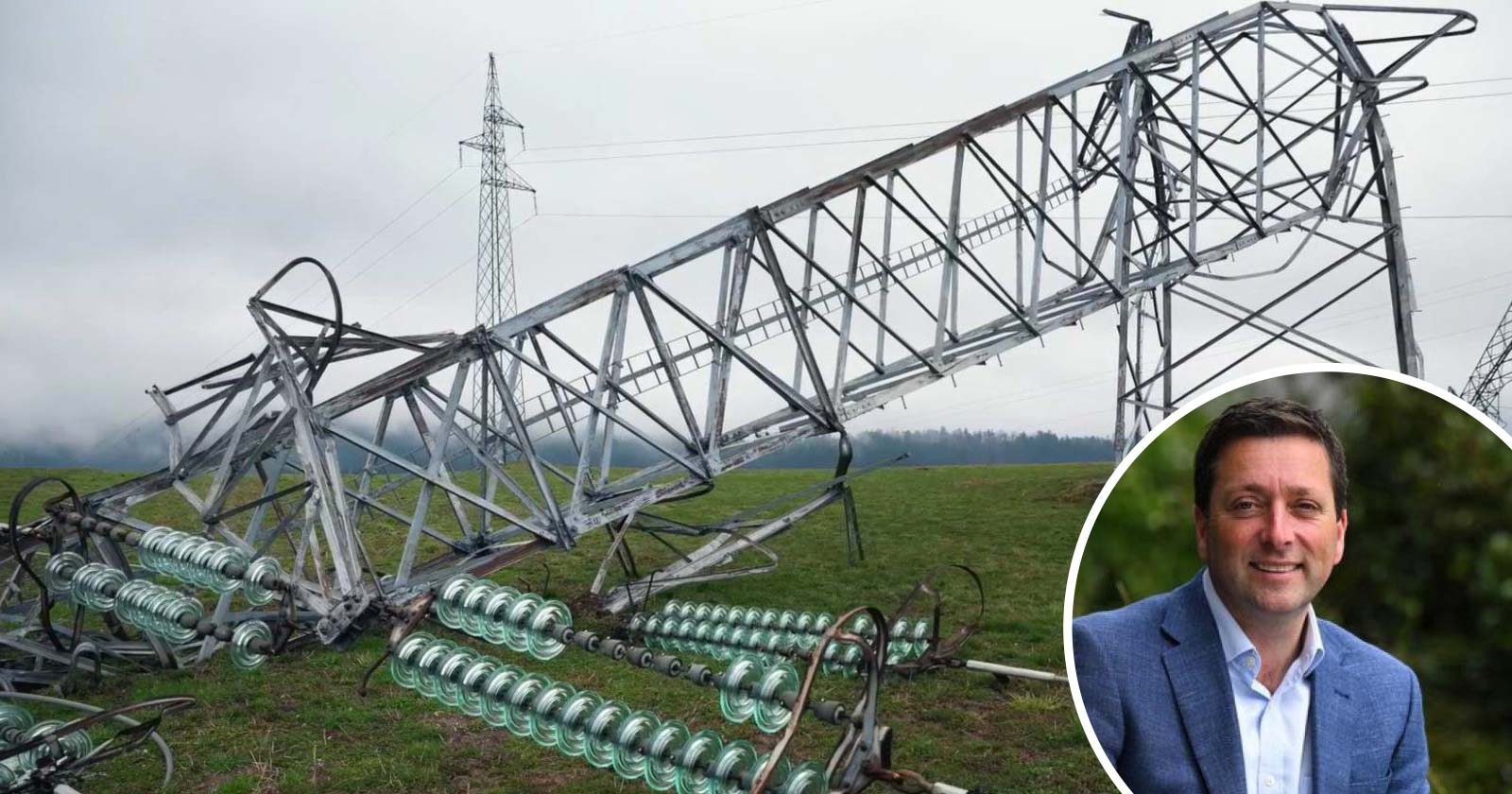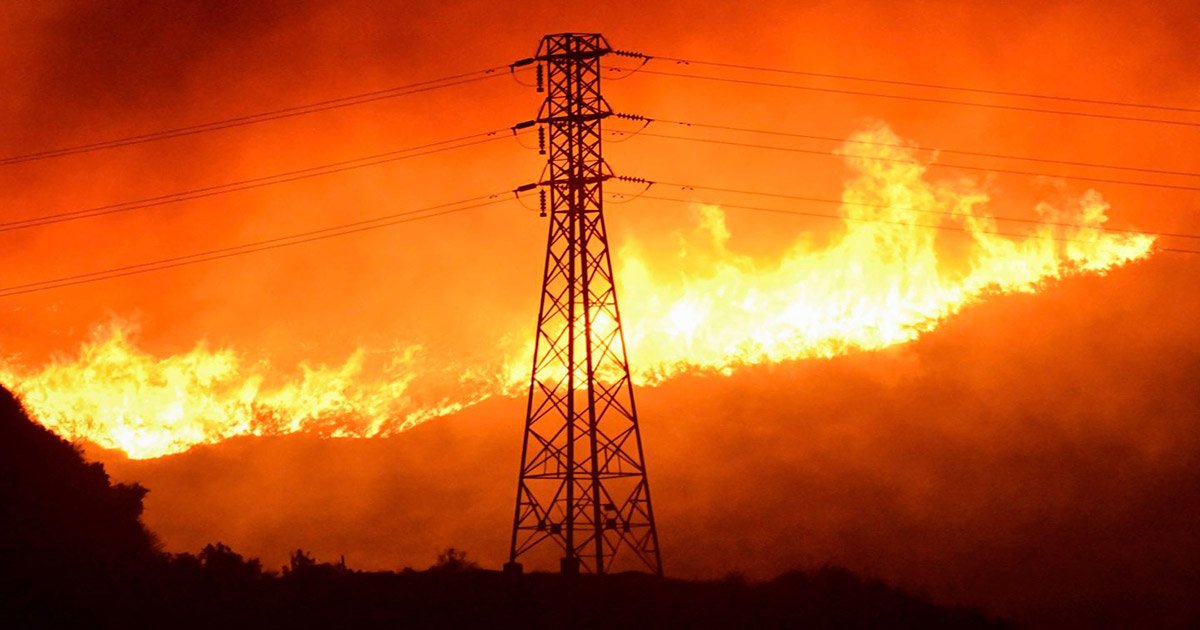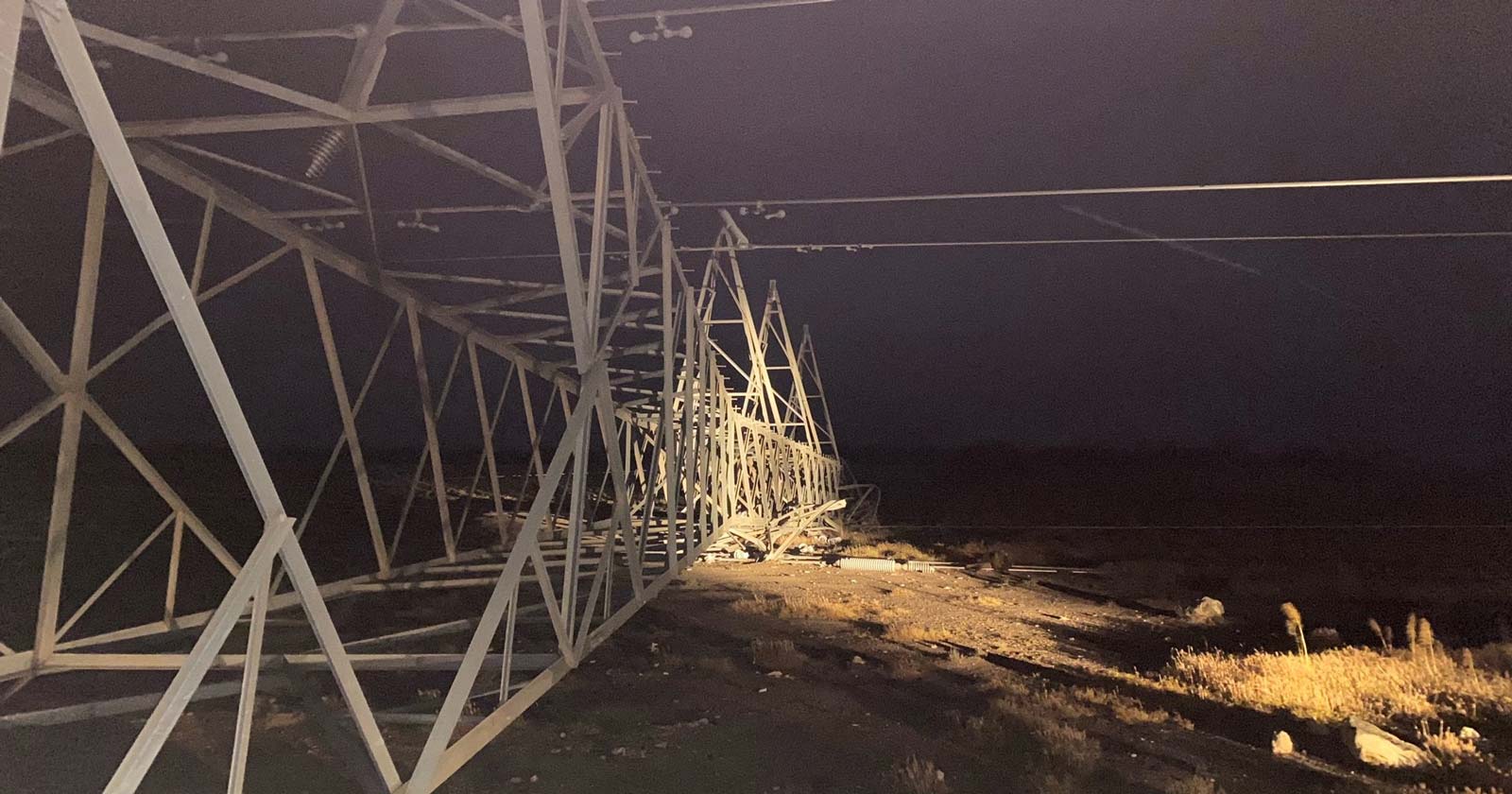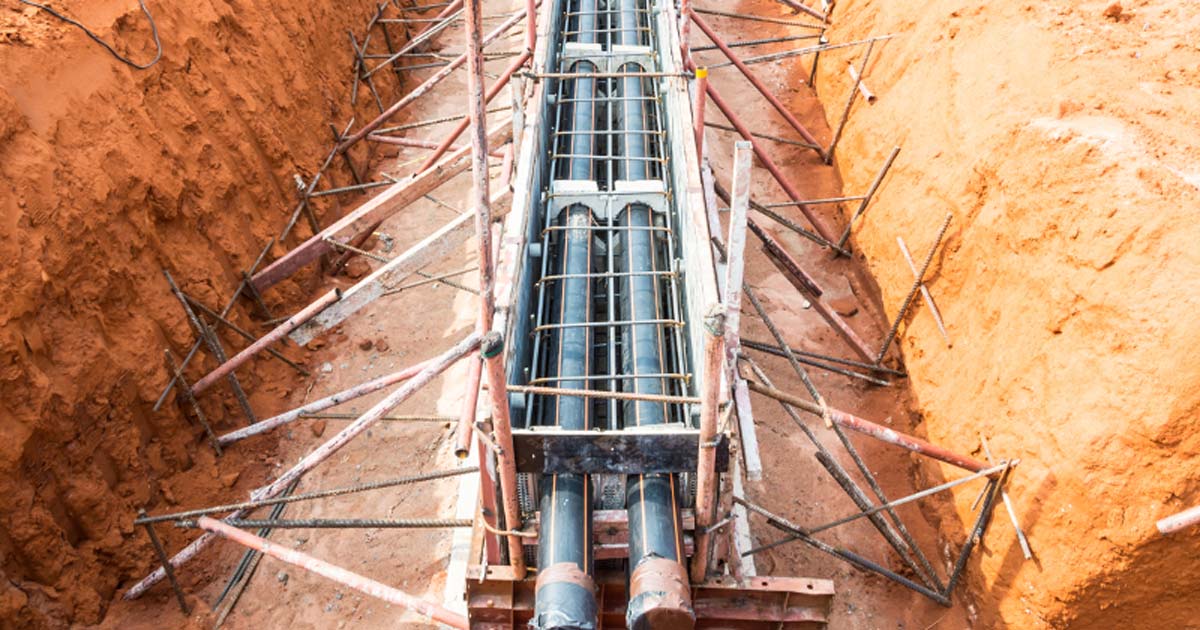Dangerous powerlines gone for good under $50 million plan

A plan to keep the lights on and Victorians safe
The latest policy announcement by Shadow Minister for Energy and Renewables, David Southwick, is promising funding to improve the stability, safety, resilience and security of the state energy grid for all Victorians no matter the conditions.
The Matthew Guy Liberals and Nationals Government announced it will introduce a $50 million plan to support the undergrounding of powerlines and vegetation clearing in bushfire and storm-affected areas.
“Prone to extreme weather events, Victoria’s regional and urban fringes have seen fire and extreme winds cause an enormous amount of damage to communities and their energy infrastructure”.
“That’s why a Matt Guy Liberals and Nationals Government will introduce a $50 million plan to support the undergrounding of powerlines and vegetation clearing in bushfire and storm-affected areas”.
“This is a common-sense plan to keep the lights on and Victorians safe,” Mr Southwick said.
While this policy relates to undergrounding distribution lines, the ones that connect your home to the grid, the consideration of undergrounding need to be taken a step further to increase the resilience of the grid.
There’s clear benefit in undergrounding distribution but if the high voltage cables (transmission lines), that transport electricity around the state from where it’s generated to where it needed, fail, this can turn the lights out for hundreds of thousand of Victorians.
It's common to hear that the likelihood of transmission tower failure is rare, but is it?
And what is the cost to Victorians and the economy of not engineering resilience?
Energy System Vulnerabilities to Bushfire

Increasing frequency of dangerous fire weather poses a threat to most assets, with a particularly high operational risk to transmission lines due to heat and smoke. Bushfire risk to critical energy assets is an important consideration in transmission line route selection and design. Routing critical transmission infrastructure away from bushfire prone areas or underground, will enable our energy networks to better withstand extreme weather events and build increased network resilience into Victoria’s energy grid.
In the Australian Energy Market Operator’s (AEMO’s) Integrated System Plan (ISP), AEMO state it has applied the principles of good engineering design in its approach to resilience in transmission planning through two criteria:
Do no harm – ensuring that any new infrastructure does not lead to unsustainable deterioration in grid resilience. Building additional transmission lines along a bushfire prone transmission corridor would be an example of resilience deterioration.
Opportunistic – where there is an opportunity to increase resilience at minimal cost to consumers, the more resilient option will be taken. This helps inform the decision-making process but is not a key driver of investment.
The key question here, in relation to minimal cost to consumers, is; how will the true cost be fully appreciated until the future extreme weather event is experienced, by then it will be too late to factor in resilience?
Considering the long term economic and social costs caused by increasing extreme weather events, the risk (to the public and transmission assets), building overhead transmission infrastructure through bushfire prone regions is counter intuitive and results in investments which are not designed to improve the grid resilience needed for bushfires or our future climate.
Extreme fire weather has increased in recent decades, especially in southern and eastern Australia, and this has been associated with an increase in the length of the fire season. Most climate change projections indicate that weather conducive to bushfires will become more frequent and more intense.
The increase in unplanned outages in New South Wales during summer 2019-20 was mainly due to bushfires impacting the transmission network between November 2019 and January 2020. A large proportion of bushfire-related unplanned outages occurred between 21 December 2019 and 4 January 2020.
- On 30 December 2019, there was an unplanned outage due to bushfires which significantly reduced the New South Wales to Victoria interconnector transfer limit and resulted in an actual Lack of Reserve Level 1 condition in Victoria.
- On 4 January 2020, Victoria and New South Wales separated due to bushfire-related unplanned outages. During this event, reserves in New South Wales decreased quickly and an actual Lack of Reserve Level 2 was declared.
While the number of bushfires ignited by overhead transmission lines is low, once started they have the potential to burn large areas. In 2018, a fire, started by a transmission line fault in the US, devastated a huge swathe of California, claiming 85 lives. Estimation shows that Californian wildfire damages in 2018 totalled $148.5 (126.1–192.9) billion (roughly 1.5% of California’s annual gross domestic product), with $27.7 billion (19%) in capital losses, $32.2 billion (22%) in health costs and $88.6 billion (59%) in indirect losses (all values in US$).
A wake-up call for further investment
The 2019-2020 bushfire season was unprecedented in intensity and devastation. Throughout the summer multiple fires burnt large areas of Victoria and all states of Australia, resulting in 34 fatalities and huge losses of land and wildlife.
The bushfires, and subsequent strong winds and heavy rain events across Australia’s east coast hit the electricity network hard. Critical infrastructure was affected, including poles and wires, regional substations, and state interconnectors, which led to blackouts for tens of thousands of homes.
Rural towns and those living on the edge of the grid were most affected where there is currently a lack of network contingency or back-up supply. However, lengthy network recovery times, intermittent surges in wholesale power prices and thousands remaining without power weeks later, highlighted a lack of overall system resilience.
During the fires, AEMO acknowledged weaknesses across the National Energy Market (NEM), calling it a ‘wake-up call for further investment’ and a clear need for more government support.
Extreme Weather Events and Deteriorated Grid Resilience

November 2022: Fallen transmission tower near Tailem Bend, SA (Twitter: ElectraNet)
Severe wind events, often associated with severe thunderstorms, can cause transmission towers to fail affecting the reliability of electricity supply to customers and potentially impacting any nearby roads or dwellings. While the impacts of extreme weather events on transmission used to be rare, the incidents are increasing in line with increasing extreme weather, the most recent in early November 2022.
In 2016, supercell storms with cyclonic winds in South Australia’s mid-north ripped 22 transmission towers out of the ground, bringing down three major transmission lines, which is believed to have caused the frequency of the grid to drop to a point where an automatic shutdown of the entire system was triggered which resulted in the state-wide blackout. ElectraNet was first warned in 2005 of the risk that 43 of its towers could collapse in windy conditions because of corrosion and degradation of foundations.
In January 2020, downbursts associated with a severe thunderstorm in south-western Victoria resulted in major damage to transmission lines, and six 500 kV AusNet transmission towers were destroyed. It resulted in a separation between Victoria and South Australia at the Heywood Interconnector and an interruption to supply to the Portland aluminium smelter.
On 12 November 2022, severe storms swept through South Australia, tearing down a 275 kV transmission tower near Tailem Bend, resulting in South Australia being disconnected from the NEM. AEMO exhausted all options available to stabilise the power system during these challenging conditions, including grid-scale generation curtailment. These measures were not been sufficient to manage the risk of major supply disruptions. Therefore, the curtailment of commercial, industrial, and residential rooftop solar PV was required as a last resort to maintain grid stability.
The true economic impact of these events is unknown but is likely to cost businesses, the public and the energy market hundreds of billions of dollars.
Resilient Transmission – Undergrounding the critical link

Champlain Hudson Power Express - 220km underground HVDC using existing rights-of-way.
The transmission network is more critical than the distribution network. The transmission network is smaller but supplies a much greater number of customers. An interruption on the transmission network due to bushfire or extreme weather events will always impact far more customers than an interruption on a distribution powerline.
A recent report by the CSIRO indicates the coming decades, Australia is projected to experience an increase in the risk of natural disasters from extreme weather, including ‘compound extremes’, where multiple extreme events occur together or in sequence, thus compounding their impacts.
To future proof Victoria's critical energy infrastructure against the devastating impacts of bushfire and extreme weather events, the Victorian Government, policymakers and network operators need to adopt best planning practices and design resilience into the grid.
For distribution and transmission. This can be achieved by avoiding areas of high risk or undergrounding transmission to increase resilience of the electricity grid and that of the many businesses and communities this essential service supports.
The electricity system is witnessing increasing pressure from climate related events. What is Australia doing about it?
Government, the energy market and policy makers need to play a critical role in building resilient electricity systems by adopting effective policy measures that can prevent a potential 'market failure' and the broad reaching economic impacts of such failure.
Is undergrounding critical transmission the solution? Maybe it is.
While there are technical advantages and disadvantages for both high voltage direct current (HVDC) and high voltage alternating current (HVAC), the reason HVAC systems are more common than HVDC is historical. National Grids have been evolving for over 100 years. Solid-state power electronics for cost effective HVDC Systems did not become available until the early 1970’s.
HVDC has experienced a dramatic global expansion in use over recent years and now provides a viable, cost effective solution to large-scale transmission. There are clear gaps in current regulatory framework that prevent prioritisation of resilience. All that's required is to remove the regulatory barriers that are fixated on the least cost solution.
As indicated in a recent Transgrid report, underground HVDC may cost three times more than an overhead HVAC solution. Is that too much to pay for resilience? When every dollar spent on engineering resilience saves six dollars spent on disaster recovery, maybe the Australian public will appreciate the benefits of underground HVDC transmission and a common-sense plan to keep the lights on.

